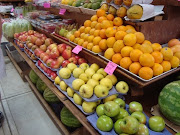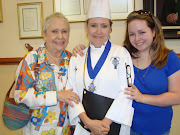A woman's place is in the kitchen. Unless that kitchen is a restaurant. Women have had a long hard road to being recognized as chefs or even allowed to work in the culinary industry. Traditionally, women have been responsible for making simple meals in the home, but not often was "cuisine" applied to female cookery.
In hunter-gatherer societies, before the advent of agriculture, women's importance in providing food was revered. Like in later societies, women stayed home or at the camp more often than men, but they spent their days gathering nutritious, calorie-dense foods to sustain the family. The men did go out to hunt and snare, but a kill was not an everyday event. Since most of the food ancient hunter-hatherers ate was gathered, not hunted, the female was recognized as the main food supplier in many ways. Many hunter-gatherer peoples, such as American Indians, treated women with equal respect as men for this reason.
As agriculture dominated Europe, most nomadic people in that area were settled by the early middle ages. Feudal agriculture begat specialization, meaning a few people could provide food for everyone, enabling others to do different jobs, like make clothes or work with metal. Women began staying home to raise children and cook meals, while men worked hard in the fields. The middle and upper classes followed this trend of keeping the women at home, despite the fact that middle and upper class women were often fairly sharp minded, and even shrewd enough to run their own businesses. The only business most of the would ever run was the business of looking after servants. Servants would do the bulk of food shopping, cooking and cleaning. The ways in which agriculture redefined society made women out of touch with their food, thereby out of touch with their necessary role as food supplier and family nourisher. They essentially lost their place in the food chain.
In the 18th Century Louis XV opposed the idea that women could cook. He loved fine foods and would only trust his menu to males, whom he belived to be superior in every way. This attitude upset one of Louis' mistresses, Madam de Barry, so she invited him to a supper made by the best "cuisiniere" (female cook) in France. Louis was delighted by the fare and asked, "who is this new cuisinier of yours? He must join the Royal household." Madame du Barry replied "It is not a cusinier but a cuisiniere and I demand a worthy recompense both of her and Your Majesty. I cannot cannot accept less than a Cordon Blue for her." At this point the Cordon Bleu was an honor bestowed upon anyone who excelled in their field, but ususally applied to cookery. Sadly, the cheeky mistress went to the guillotine in 1793, but fortunately her ideas about women as great chefs did not die with her. In 1895, a cuisiniere named Marthe Distel began publishing a newsletter under the title Le Cordon Bleu ou Nouvelle Cuisiniere Bourgeouise. She began offering cooking classes in the same year, and the school of Le Cordon Bleu was born----to a woman.
Famed chef Julia Child attended the Cordon Bleu in Paris in 1948. She penned several cookbooks, hosted a popular PBS television series and went on to form her own cooking school L'ecole de Trois Gourmandes Julia was later the first woman inducted into the Culinary Institute Hall of Fame. She was really the first Female celebrity chef. A little known fact about Julia was that she worked for the OSS during WWII as a spy in Ceylon.
The prosperity of post WW2 America made for what seemed like a happy life for the new breed of suburban housewife. Labor saving devices such as toasters, blenders and self-cleaning ovens turned the kitchen into a world of technological wonders, and the icebox cut down on daily trips to the food markets. Women began to enjoy their time in the kitchen and in the home and began devising their own recipies influenced by all the new prepared food products and wacky kitchen gadgets around them. Soon the age of Jello salads and microwaved eggs was upon us. Unfortunately, the kind of cookery perpetrated by the mid-century housewife did not contribute much to the culinary arts. In fact many of the trends in food from that prosperous era let to excessive beef consumption, fat consumption, and consumption in general. They many not have had a positive impact on cuisine back then, but women of the 1950's certainly did a lot to shape the way Americans would eat food for the rest of the 20th century.
The Feminist Movement of the 1970's did a lot to put some women back where they belong---that is in a commercial kitchen. By 1971, amid all this turmoil, chef Alice Waters opened her own restaurant, Chez Panisse, in Berkeley and became one of the first hugely successful female restauranteurs. She abolished the kitchen heirarchy that had been inherited from old Frenchmen, and encouraged a collaborative atmosphere at the restaurant.
Chefs now hold more intrigue for the American public than ever before, as evidenced by a rise in restaurant revenues and the phenomenal success of food-related media. However, a quick, online image search of the word "chef" still results in a dozen curlicue-mustached tubby cartoon men.
Compared to fifty or even 20 years ago, the success of women chefs today is staggering. However, there are still obstacles for aspiring women even now. According to a recent poll, 91% of all executive chefs in the US are men. The fact that male chefs are currently in power means they will continue to hire more male chefs, who will presumably cook like them. Once a woman gets her foot in the kitchen door, she must tiptoe to avoid the wrath of her male co-workers, who are all working toward higher position. If she works her way up to executive chef she will be paid, on average, 20% less than the man she replaces. As of February of this year, there were 2,134 certified excutive chefs in the US and only 92 of them are women. Now there are female chefs at all levels of the profession, and increasingly, these chefs are working to make a difference. First Lady Laura Bush even hired the first female Executive Chef at the White House. Being a female chef gives you another public relations facet. Also, women now have several good organizations devised solely for women. Les Dames d'Escoffier is one good example.
Women today must focus on their culinary skills and not let anyone stand in their way. There are good chefs and bad chefs, some are men and some are women. If we focus on being the best and nothing else not only will we succeed, but our businesses or employers will get the most out of us.










